Power – Temp – GPU Clock Frequency
Power
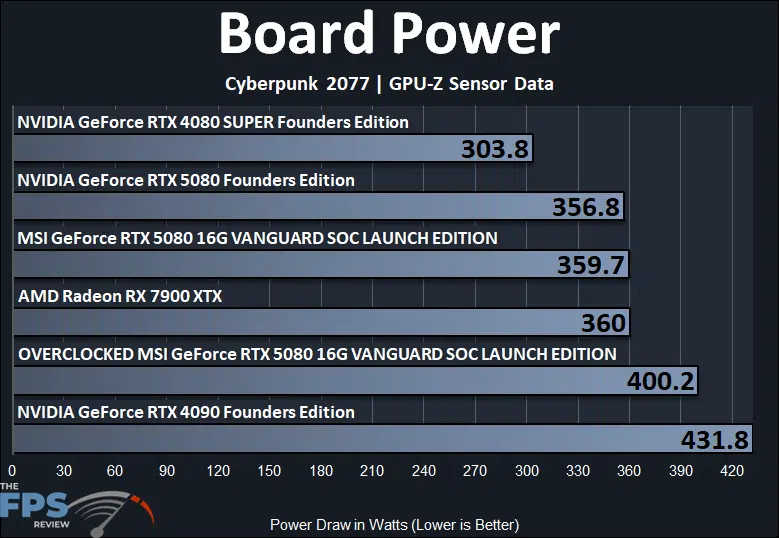
The TDP of the NVIDIA GeForce RTX 5080 FE is 360W. In our testing, the MSI GeForce RTX 5080 16G VANGUARD SOC is very close to the power draw of the NVIDIA GeForce RTX 5080 Founders Edition, just consuming 3W more, so practically the same. This is great, considering the MSI GeForce RTX 5080 16G VANGUARD SOC is a factory overclocked video card to begin with, it is designed well and stays cool, and it does not demand more power to get there.
When we Overclocked the MSI GeForce RTX 5080 16G VANGUARD SOC, the power did increase by 40W, or 11% by maximum peak power. At 400W this puts it above the Radeon RX 7900 XTX, but 30W less than the GeForce RTX 4090 FE.
Temperature
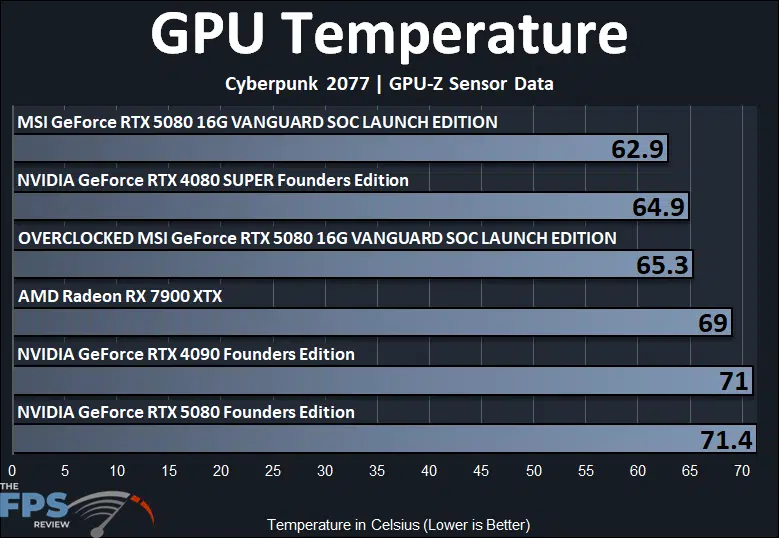
Note that the MSI GeForce RTX 5080 16G VANGUARD SOC is at the default automatic fan speeds for all testing here, even overclocking. The MSI GeForce RTX 5080 16G VANGUARD SOC runs incredibly cool at just 62.9c GPU temp, it is the coolest running card here. It even runs 2c cooler than the NVIDIA GeForce RTX 4080 Founders Edition! Remember, it is factory overclocked as well. The MSI GeForce RTX 5080 16G VANGUARD SOC runs a LOT cooler than the new NVIDIA GeForce RTX 5080 Founders Edition, a full 8.5c cooler, so the MSI GeForce RTX 5080 16G VANGUARD SOC is an improvement over the NVIDIA RTX 5080 FE in cooling. Even when we overclock it, the GP temp rose only 4-5c warmer, and this is with auto fans.
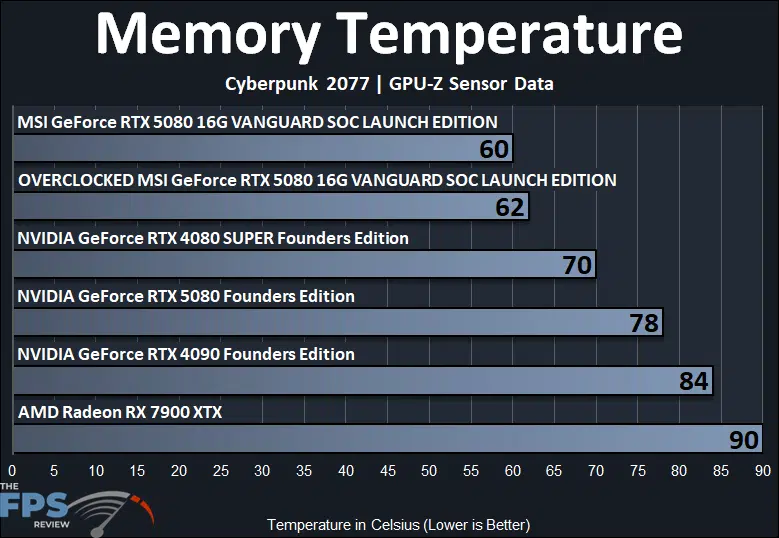
We also wanted to look at the memory temperature. The NVIDIA GeForce RTX 5080 Founders Edition’s memory ran at 78c, but the MSI GeForce RTX 5080 16G VANGUARD SOC is only 60c on the memory, a big improvement there as well! When we overclocked it, memory temps only rose by 2c. The MSI GeForce RTX 5080 16G VANGUARD SOC is one incredibly cooled video card for this GPU, even when pushed with more Voltage, and overclocked to the max.
GPU-Z and HWiNFO64 Screenshots
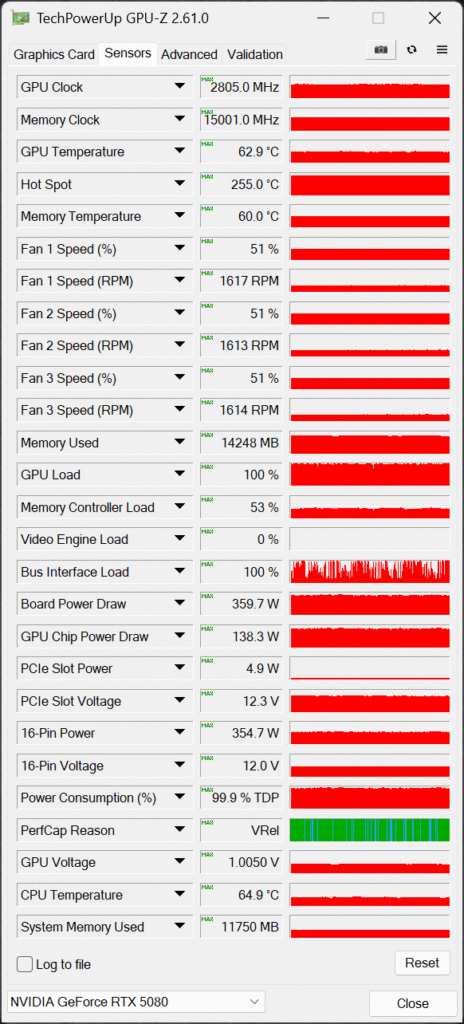
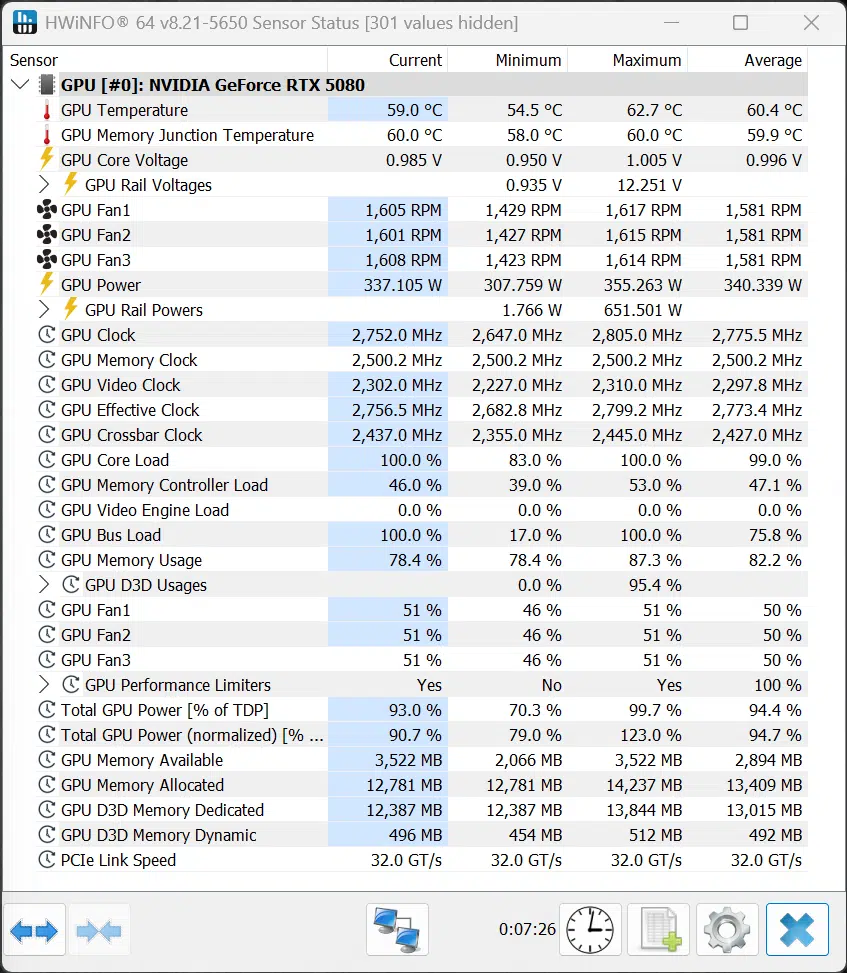
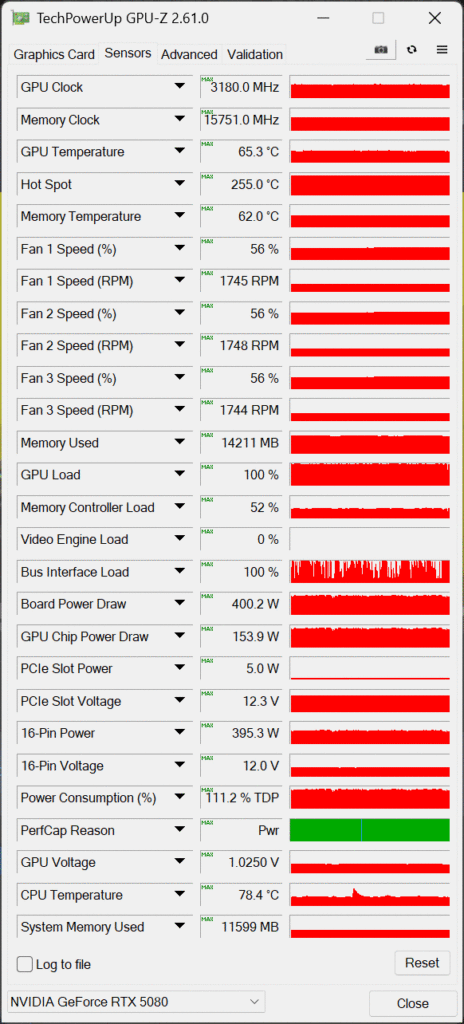

At default (left), the MSI GeForce RTX 5080 16G VANGUARD SOC hits a maximum GPU Voltage of 1.0050V without changing any settings. The fan speed is around 50% by default, without overclocking. When we increase the Voltage, it maxes out at 1.0250V, and the fan speeds increase just a little to 56% with the overclock, yet it still retains these excellent temperatures. This does show that the Voltage slider is working, and the Voltage does increase a bit with MSI Afterburner.
